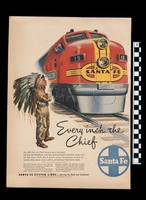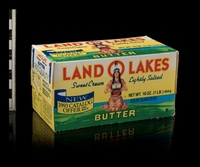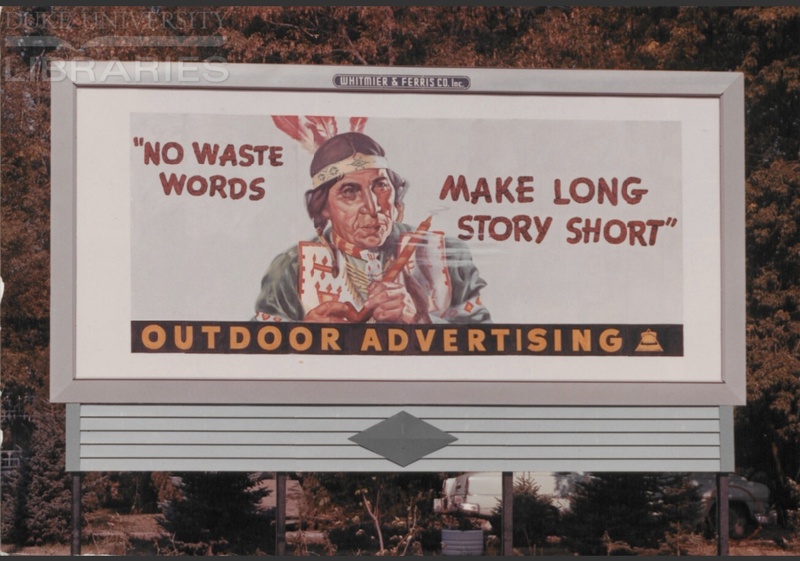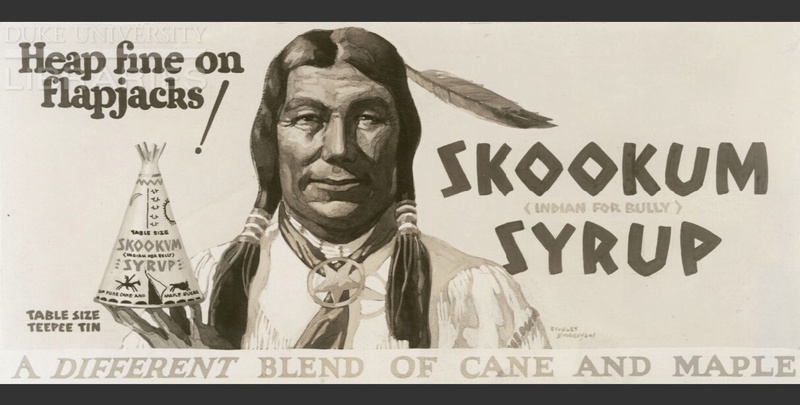Native Americans in Advertising
Advertising in America didn’t just profit from Native American culture; it tried to recreate the culture for profit.
To do this, marketers mixed cultural aspects from various Indigenous groups to give a generic vision of “Native” culture known as the Plains Indian Motif. The images displayed came from different indigenous groups. One image could represent the Great Plains, Northeastern Woodlands, and Pacific Northwest by including a feathered headdress, tomahawk, and totem pole. Advertisement created the mythical Indian, and Americans loved it. For one, the image removed Americans from the historical past of Indian boarding schools, reservations, the Trail of Tears, and other atrocities committed by European settlers and White Americans. Advertising played on the noble savage, fetishized Native women, and at times couldn’t decide to glorify or demonize the people.
The items advertised often had nothing to do with Native Americans or the product. Instead, they focused on the exotic, often inviting White Americans to visit the colorful lands and people often depicted in the images. Companies like Santa Fe beckoned White consumers to ride the Chief train to Indian country. They named their passenger trains after Indian figures such as Super Chief, Navajo, and The Hopi. An Indian figure wearing a stereotypical “native” attire that consisted of a feathered headdress and fringed buckskin accompanied the product. Like much of the advertising, the goal was to lure White Americans with the romanticized and whitewashed narrative of American Indian and European relations.
Marketing found another typical trope: the beautiful Native woman who was scantily dressed and represented nature, purity, and servitude. The Land O Lakes products featured the kneeling Pocahontas caricature offering consumers butter. The logo played in line with the mythical image that many White Americans had of Native people, particularly Native women. Stories like Pocahontas saving John Smith and Native women serving pilgrims on the first Thanksgiving promoted a sense of peace and servitude that conflicted with the violent history between Europeans and Native American tribes.
Advertising also tried to mimic and mock Indigenous people's speech patterns and word choices. Advertisers played with the language spoken by Native Americans, using broken English, shortened sentences, and omitting words. Billboards removed words as seen in “No Waste Words… Make Long Story Short.” Other times they used “Indian” words and expressions, such as “Heap-Big” or “Heap-Fine” by Skookum Syrup. By stereotyping their language, advertising presented them as a collective, ignoring each group's voice, story, and culture.



